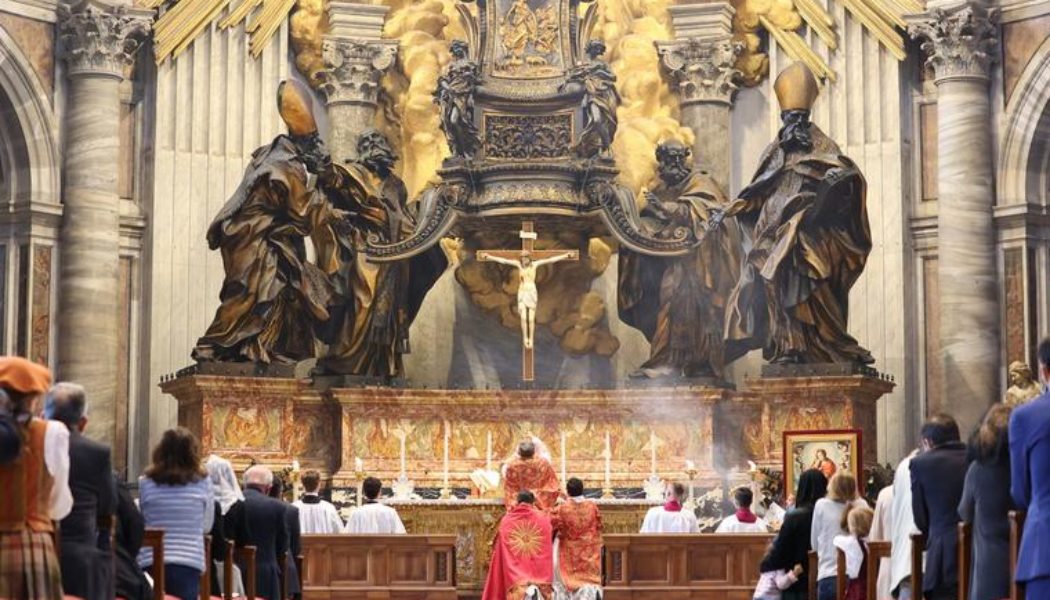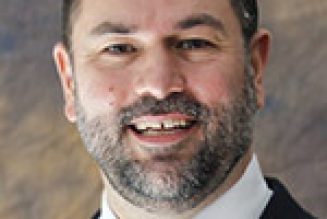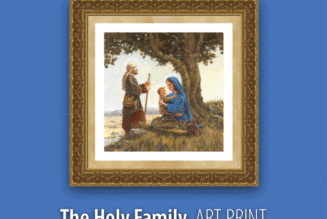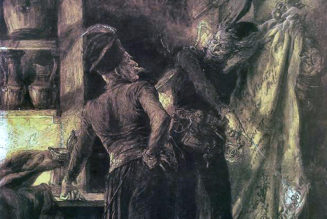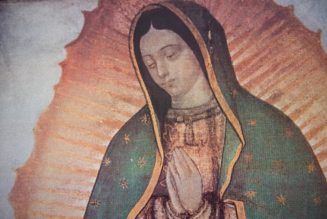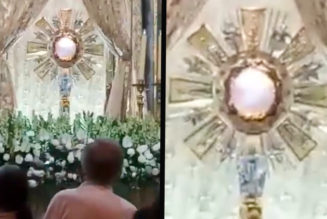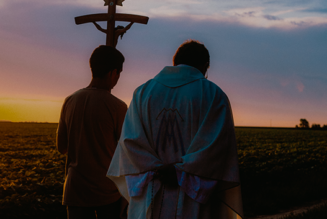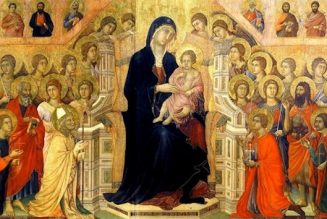
VATICAN CITY — Reports have circulated for several years now of Catholic priests being told to cease saying private Masses by themselves and celebrate with other priests instead, a practice called concelebration.
In 2021, for example, the Vatican banned priests from saying private Masses at the above-ground altars in St. Peter’s Basilica. The edict was later eased after a public outcry, but concelebration in the basilica is now “the norm.”
That same year Archbishop Roland Minnerath of Dijon, France, expelled members of the traditional Priestly Fraternity of St. Peter from his diocese because they would not concelebrate Masses — specifically the Chrism Mass in the ordinary form — and had not done so for many years. Various religious communities, houses of formation and parishes have similarly mandated concelebration.
Proponents say the practice has enriched the Church as a whole, as well as a priest’s spiritual life, that it shows the unity of the order of bishops united to the priests and to all people, and that it can perhaps act as a kind of antidote against clericalism.
Those enforcing concelebration are largely intent on promoting the post-conciliar liturgical reforms that were introduced in the 1970s, and therefore wish to place penalties on those seen as obstructing their full implementation.
It so happens that many of those who continue to celebrate private Masses have a devotion to the traditional Latin liturgy, which Pope Francis severely restricted in his 2021 motu proprio Traditionis Custodes.
In a later clarification of that decree, Cardinal Arthur Roche, prefect of the Dicastery for Divine Worship and the Discipline of the Sacraments, specifically ruled that a priest was no longer allowed to celebrate the Traditional Latin Mass if he refused to concelebrate. The bishop was also ordered to ascertain that the priest’s attitude did not reject the liturgical reforms of 1970 and the teaching of the Second Vatican Council, and that he understood the “value of concelebration.”
But is mandatory concelebration coherent with the Second Vatican Council and canon law?
This and other questions were discussed by a group of Church scholars earlier this year at a Rome conference organized by the Centre Internationale d’Etudes Liturgiques on the theme “Concelebration and Private Masses in the History of the Liturgy.”
Among the speakers was Father Stéphane Drillon, an ecclesiastical judge and chancellor of the Diocese of Nice, who argued that prelates who are forcing concelebration upon priests are not being faithful to the Council texts and exploiting weaknesses in a canon concerning the practice.
“Priests can concelebrate,” Father Drillon maintained at the Jan. 25 event, but he said there is “no obligation” to do so found in the Second Vatican Council’s constitution on the liturgy, Sacrosanctum Concilium.
However, he noted what he saw as a shortcoming of Canon 902, the canon that deals with concelebration, saying that it fails to specify the “concrete conditions” under which a priest can celebrate individual Masses.
Other aspects of concelebration discussed at the conference included its “sacramental effect” and the importance not only of the unity experienced by concelebration, but also the necessity of underlining “the sacramental event of every Holy Mass.”
Another talk explained how concelebration as it is practiced today in no way resembles the rare “Roman concelebration” which died out in the 12th century and involved the Pope, cardinal priests, and was limited to major feasts.
Other speakers also looked at later historical practices of concelebration before the Pauline reforms of the 1970s, as well as the celebration of individual ‘private’ Masses from their origins to the 13th century, and concelebration in the Syro-Maronite rite.
Rare Concelebration
Up until the post-Vatican II era, ritual concelebration was rare and usually only took place at the ordination of a priest or the consecration of a bishop. In these very specific cases, the concelebration was not entirely equivalent to the modern practice, in that the newly ordained priest was given the Sacred Host but received unconsecrated wine from a chalice other than that used to consecrate the Precious Blood. Vatican II’s constitution on the liturgy, Sacrosanctum Concilium, introduced the practice of concelebration by suggesting that a rite of concelebration be drawn up, but suggested it be restricted to particular occasions.
A 1967 Vatican instruction which paved the way for the 1970 liturgical reforms, Eucharisticum Mysterium, went further. Stressing that concelebration shows the “unity of the sacrifice and of the priesthood,” it made a point of encouraging the practice. Unless it “conflicts with the needs of the faithful,” the document continued, and while noting that “every priest retains the right to celebrate alone,” it said it is “desirable that priests should celebrate the Eucharist in this eminent manner.”
In his Jan. 25 address, Father Drillon pointed out that in the previous 1917 Code of Canon Law, concelebration was allowed only in two specific cases (the Mass of the Ordination of Priests, and the Mass of the Consecration of Bishops) in order to “manifest the unity of the priesthood.” In both instances, a bishop always had to be present.
Father Drillon said individual Masses were preferred (with a server or one other person present) because it was considered an “excellent thing” that the number of Masses be multiplied “for the glory of God, and the good of the faithful,” bearing in mind the Thomistic principle: “by multiplying the cause, one multiplies the effects.”
Pressure to increase the instances of concelebration began at the Second Vatican Council even though, as Father Drillon noted, only a “tiny minority” of votes (1.9%) called for concelebration to be included in the Council discussions in the pre-preparatory phase.
In the preparatory phase, he said there was a “general” but “unproven” desire for concelebration to be extended, and the Liturgy Commission made numerous key omissions including the fact that Eastern Churches refuse concelebration.
The Council eventually decided to extend the faculty of concelebration but limited it to Holy Thursday and the Chrism Mass, Masses celebrated in Councils, episcopal assemblies, and synods, and at the Mass of an abbot’s blessing. A bishop could also permit concelebration on other rare specific occasions.
Moreover, the Council stipulated that every priest would “always be free to celebrate Mass individually” but not on Holy Thursday and in the same Church when a concelebrated Mass was taking place. The Council also stressed that concelebration “should never undermine the value of private Masses.”
Between the Council and the promulgation of the 1983 Code, Father Drillon pointed to three magisterial texts which emphasised that concelebration denoted a single sacrifice and so “multiplication of Masses became desirable.”
Of those texts, Father Drillon highlighted in particular the Vatican’s Declaration de Concelebratione of 1972 which stated that “while the excellence of concelebration as a manner of celebrating the Eucharist in communities is not to be denied, Mass without the participation of the faithful remains at the same time the center of the entire Church and the heart of priestly existence.”
“This is why each priest ought to be allowed the right to celebrate Mass alone,” the document states, adding that a time, a place, and assistance should be made available to facilitate “a single celebration.” The 1983 Code removed the obligation on a priest to celebrate with a server or one other person, and it is possible that the proliferation of private Masses celebrated without another person has favored the insistence on concelebration (Editor’s note: The priest does not in reality celebrate the Mass “alone” for there is always the participation of the choirs of angels and of the communion of the saints, and of course, the presence of the Lord Himself).
No Obligation
Father Drillon said Canon 902 affirms this freedom to celebrate private Masses. It stipulates that “unless the welfare of the Christian faithful requires or suggests otherwise, priests can concelebrate the Eucharist” but that they are also “completely free to celebrate the Eucharist individually,” although “not while a concelebration is taking place in the same church or oratory.”
He also noted that concelebration is not encouraged in the canon, denoting it is a step back from Eucharisticum Mysterium but more faithful to Sacrosanctum Concilium. He also pointed out that the freedom to celebrate individually is “clearly affirmed” in the canon and “not limited, except by a liturgical prescription.”
But Father Drillon stressed that this freedom is not currently respected, and he blames a “legislative and disciplinary gap” which, he said, “needs to be filled.” It is “very difficult,” he added, to apply Canon 902 “concretely” as recent mandates have shown. The canon “certainly affirms this freedom, but without specifying the legal and concrete conditions under which it can be exercised,” he said.
As a solution, the French canonist advocated new legislation which would underline the value of concelebration while making concrete a priest’s right and freedom to celebrate individual private Masses.
He also proposed that Canon 1378 on “abuses of power” should be invoked in defense of those priests who have been denied their right to celebrate Masses privately. He further noted how concelebration can make some priests who wish to celebrate privately and individually “de facto strangers and cut off from the ‘community’ and the ‘presbyterate.’”
Father Drillon also highlighted Pope Pius XII’s encyclical Mediator Dei which warns against those who forbid individual Masses at different altars at the same time on the grounds that they “divide the community and endanger its unity.”
Other Canonists Respond
Not all canonists believe Canon 902 needs changing, however.
Canon law Professor Ed Peters at the Sacred Heart Major Seminary of the Archdiocese of Detroit told the Register he thinks the canon “reads fine as is” as it “generally protects the rights of a priest to engage in his signature act of worship — celebrating the Eucharist — in the manner he feels most appropriate at a given time.”
He added that Masses where concelebration is liturgically required, for example the Chrism Mass, “are very few,” but generally, he said, “priests are canonically, and should be in practice, free to concelebrate, or not, as they prefer.”
“Outside of a few cases required by liturgical law, demanding concelebration of them is a violation of priests’ rights,” Peters said.
Father Gerald Murray, a canon lawyer and the pastor of Holy Family Church in New York City, told the Register that he welcomed Father Drillon’s “amplification” of Canon 902, but added that whether fewer Masses are being celebrated due to concelebration is a “contested matter.”
“Each concelebrant is allowed to offer the concelebrated Mass for an intention of his own choosing,” he said, “thus each applies the fruit of the Mass to an intention different from that of the main celebrant. That seems to me to mean that each priest celebrates his own Mass within the structure of the concelebration.”
Liturgists, however, stress that although a priest may apply an intention and claim a stipend when he concelebrates, there is only one Mass, not as many Masses as there are concelebrants.
Cardinal Raymond Burke has also cautioned against too many concelebrated Masses, saying individual Masses are the norm, and that if concelebration becomes excessive, it can obscure the priests’ unique role in the sacred liturgy. Liturgical experts also contend that “endless concelebration” has had a negative effect on many priests’ perception of their own sense of offering the Mass. Concelebration has also posed problems for religious priests expected or forced to concelebrate a conventual Mass (the daily community Mass) as opposed to offering their own daily private Mass.
In his address, Father Drillon, underscoring the fruits of the sacrifice of the Mass, said he believed it was important that as many Masses as possible are celebrated given that man is imperfect and limited in receiving its infinite value. Furthermore, he noted a possible loss of income in a diocese due to the prohibition of individual private Masses, and fewer Masses said for the dead.
“The Church of God possesses a treasure: the Redemption,” Father Drillon said, “which allows the Blood of Christ to flow over the Church and the whole world at every Mass.”
